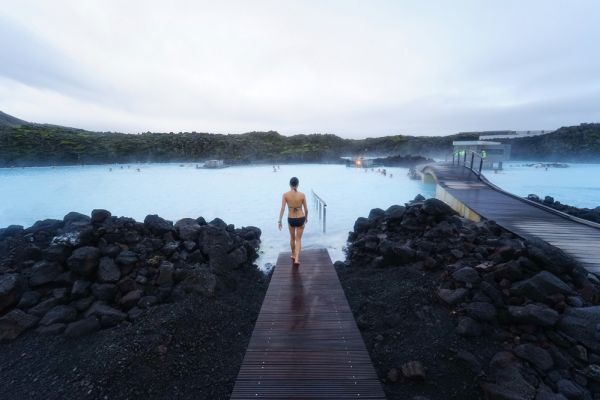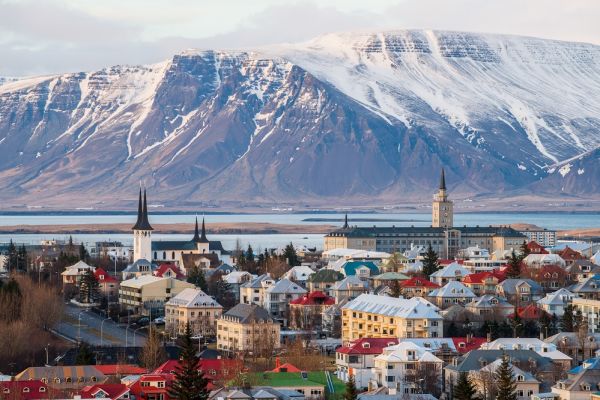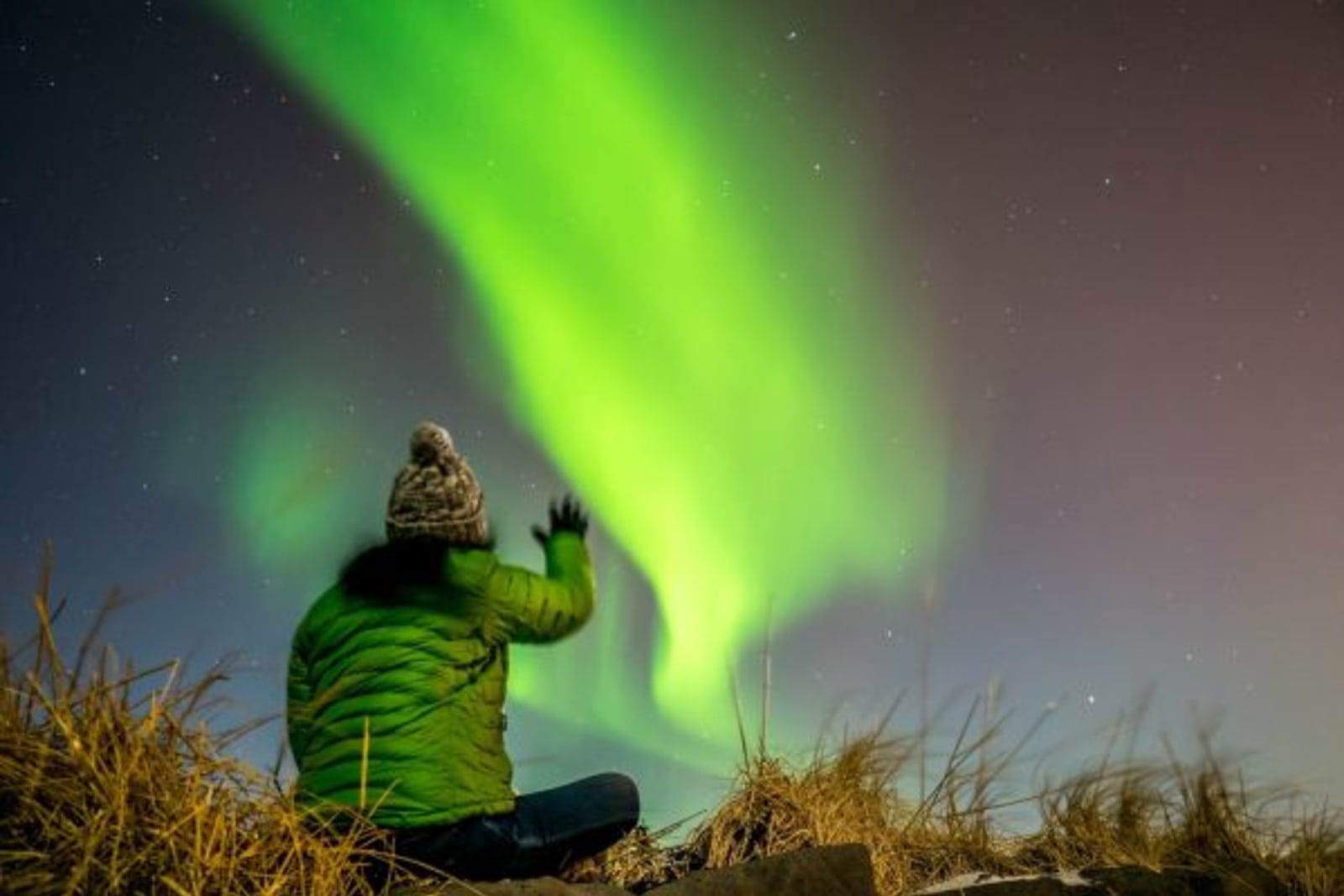
ReykjavikTravel Guide
The coastal city of Reykjavik, the capital of Iceland, has been called the “smallest big city in the world”. Delightfully peaceful and uncrowded, visitors come here to recharge, relax and discover the natural wonders the city has to offer, such as the incredible light show phenomenon of the Aurora Borealis. Other nearby natural attractions include hot springs, volcanoes, lava fields, waterfalls and glaciers. The city, although small, is by no means boring! There's so much to see and do from street art to galleries, Viking museums to world-class restaurants. Clubs, bars and pubs are plentiful and Reykjavik pumps at night. Visit in winter to enjoy the snow, snow sports, and the traditional European Christmas season. Or visit in summer to hike, go to concerts or experience the midnight sun. As you can see, Reykjavik is a year-round destination! Let our Reykjavik Travel Guide tell you more!
Explore Reykjavik
Where to stay in Reykjavik?
You’ll find loads of accommodation options close to all the action but there are also quieter corners from which you can explore the city. Whether you prefer hotels or hostels, the quirky or the historic, Reykjavik has it all.
The Reykjavik Residence offers self-catering suites, apartments and economy studios centrally located in downtown Reykjavik. A stay here will suit most budgets and needs – and how great to be within walking distance of many city attractions. Also close to where everything happens is the four-star Center Hotel Laugavegur hotel. With a selection of comfy rooms, there’s also an on-site bar and restaurant, a concierge service and free wifi.
Sometimes all you need is a place to lay your head because you’re watching your budget. Luckily Reykjavik has several hostels and 2-star guesthouses, depending on your needs. The Loft HI Hostel is popular with visitors looking for a friendly, party vibe. Happy hour and a rooftop bar help things along! There’s also a bus stop close by, making it easy to get around and to do sightseeing. The quirky, colourful Butterfly Guesthouse is another budget-friendly option. You can’t miss it with the huge red butterfly painted on the façade, and as it’s family-run, you can be sure of that welcoming personal touch.
Guesthouse Galtafell is a lovely big historical residence near the famous and impressive landmark of the Hallgrimskirkja Church in central Reykjavik. It offers a choice of bright, airy rooms and apartments. For a home-away-from-home feeling, the Reykjavik Treasure B&B really is a gem. A historic little house in the old town with only seven rooms, it’s known for great breakfasts and cosy creature comforts.
Believe us when we say, this is just the start. Book your Reykjavik accommodation today!
Things to do in Reykjavik
Among the biggest tourist drawcards are the geothermal spas on the outskirts of Reykjavik. But the city has many other charms waiting to be discovered for nature and culture lovers alike.
Once you’ve checked in to your accommodation, heading off to a nearby geothermal spa is the perfect antidote to travel fatigue. These natural pools are heated with energy from the Earth and resorts and spas have been established all around them. One of the most popular, attracting visitors from across the globe, is the Blue Lagoon, a short drive or bus trip from Reykjavik. Situated near the town of Grindavik, it’s the largest in the world and the milky blue warm waters with temperatures of between 37–39° C (98–102° F) are said to have healing properties. On-site you’ll also find a restaurant, bar, sauna and steam rooms.
If you want to experience two natural wonders, you’ll have to take two trips to Reykjavik – once during October to March to see the Aurora Borealis, the phenomenon commonly known as the Northern Lights – and again in the summer months to enjoy the midnight sun. The Northern Lights are formed in the atmosphere where electronically charged particles from the sun create a surreal wash of blue and green across the dark night skies. There’s a museum in Reykjavik dedicated to the Northern Lights, and here you can also find out about the many tours available to get you to the best viewing spots. The midnight sun happens around the 20-22nd of June when the axis of the Earth is tilted towards the sun, and the sun doesn’t set. In other words, there’s daylight for 24 hours! Reykjavik, as the northernmost capital on Earth, experiences the midnight sun but also the opposite, with its winters being really dark and long.
A visit to a Viking museum is a must when in Reykjavik. And the Saga Museum is top-notch! From life-like historical figures to sets depicting the day-to-day of early settlers and major events, you’ll be taken through Iceland’s fascinating past. To get acquainted with Icelandic art, head to Culture House in downtown Reykjavik, home to various exhibitions and Iceland’s largest art collection. On the other end of the spectrum, Reykjavik has a thriving street art scene of colourful, complex murals and graffiti. Head to Laugavegur, Grettisgata and Skólavörðustígur streets, where the murals are plentiful, while downtown boasts commissioned works both inside and outside some buildings.
Glaciers abound in Iceland, and much of the country's interior is Arctic Desert. Guided ice-caving and glacier tours are the best ways to experience these otherworldly landscapes. But what are ice caves, you ask? They are naturally formed inside glaciers during the winter months, and when you go ice-caving, you step inside a glacier with ice walls all around and an ice roof above and you get to explore. A magical experience! Ice-caving season is from November to March.
Whale-watching from a boat in the Faxaflói Bay and helicopter flips over volcanic craters are just a few of the exciting adventures you can enjoy when visiting Reykjavik. There are also plenty of cruises and yacht tours available. If you’ve rented a car, a drive to the Golden Circle is highly recommended. This is an approximately 300km tourist route from the capital that loops through the southern part of the island into the southern uplands, taking you through breathtaking scenery.
Looking for an immersive experience? Then a Reykjavik tour is the way to go.
Flights to Reykjavik
Reykjavik food and drink
Many excellent restaurants in Reykjavik cater to every palate, from local fare to fine dining with seafood prominently on the menu. There is also a variety of street food not only limited to local flavours. These are some of our favourites:
Akur restaurant and wine bar is a contemporary space overlooking Reykjavik’s old harbour. The menu offers French Nordic cuisine and seafood; dishes change with the seasons and produce available. The wines are sourced from France. Sjávargrillið Seafood Grill in the heart of the city has an award-winning chef at the helm and is known for some exotic dishes such as shark and interesting combos like langoustine tacos. For a fine-dining fix, head to Laugavegur Street and ÓX Restaurant.[B(1] Offering an exclusive and unique experience, and catering to 16 diners only, you’ll be seated around the chef as he prepares each dish.
Can you believe that the most common street food in Reykjavik is the hot dog? They’re served with various toppings, like onions and mayonnaise or wrapped in bacon, and hot dog stands can be found throughout the city. While street food markets tend to pop up in summer, your best bet is to head to the food halls selling local and international street food, such as the Grandi Mathöll in the harbour district. You’ll find everything from fish and chips and burgers to pasta and Korean street food here.
Kaffi Loki is a restaurant serving authentic local fare and the perfect place to refuel after sightseeing in the city. It’s situated across the road from the Hallgrimskirkja Church, so it’s easy to find. Insider tip: The desserts are incredible! Another goodie is Höfnin Restaurant at the harbour, with views of the boats and the mountains across the water. They offer a set three-course dinner, but there are also lunch and dinner menus featuring famous Icelandic lamb, reindeer and vegan options.
Get a real taste for the local cuisine by booking a Reykjavik tour.
Where to shop in Reykjavik?
The bustling, lively Laugavegur is the main shopping street in Reykjavik. It’s been called “Iceland’s coolest street”, and you could easily spend a day here browsing through the family-run souvenir shops, high-end boutiques, bookstores, accessories and cosmetics stores, among others. Some unique locally made items you may come across are lava rock jewellery and fish leather products, which make for wonderful gifts. Enjoy thrift shops? Laugavegur is home to the quirky little Spúútnik, popular with locals and tourists alike, the Red Cross thrift shop and the Fatamarkaðurinn Second Hand Market. Skólavörðustígur Street runs from the corner of Laugavegur and Bankastræti streets to the Hallgrimskirkja Church. Head here if you’re looking for artwork, ceramics, Icelandic design or woollen items. If you’re keen on budget shopping, Iceland’s only flea market, Kolaportid, is located indoors near the harbour and is a great place to pick up souvenirs, books, antiques, jewellery, trinkets and more. Many of the city’s seasonal markets are held near the harbour, from Christmas markets in the winter to food markets during summertime. For one-stop shopping in Reykjavik, we recommend the Kringlan Mall, which houses a whopping 150 shops including international brands and boutiques. If you’re looking for Icelandic design clothing, you’ll find it here. The knitted and crocheted garments are not only beautiful but great quality too. After all that shopping, you can watch a movie and choose from 23 places to have a meal.
Looking for a safe and simple way to bring your money when you travel? Our Travel Money Card has you covered!
When is the best time to travel to Reykjavik?
Iceland’s weather is generally cool to cold, no matter the time of year. Even in the summer months, the average temperatures are only between 10°C and 12°C (50°F and 54°F). Peak season is July and August when tourists flock to Reykjavik to experience the midnight sun. If you want to include hiking or many outdoor activities in your itinerary, the best time to visit Iceland is in the summer. Plus, you’ll get between 16 and 21 hours of daylight! If you’ve decided to visit in the winter months to make the most of the snow, pack your warm winter woollies and thermals – the temperatures at this time average around 1-2°C (33-35 F). However, it can be even colder, as low as -10°C (14 F). The days are very short – there are only about 4-and-a-half to 7 hours of daylight. Remember to pack in your swimsuit, though, so you can enjoy the thermal pools and spas, which are open all year round. The shoulder seasons are between September and November, and February to May, meaning fewer tourists, so if you prefer to dodge the crowds, these are the recommended times to visit Iceland.
Don't miss out. Book your Reykjavik flight today!
How to get around Reykjavik
Reykjavik is a pedestrian-friendly city; exploring on foot is a great way to do your own thing and mingle with the locals. You can also rent a bicycle or electric scooter, or opt for a biking or Segway tour to see more of Reykjavik and the surrounding areas. There are several operators in the city so do a price check and read the reviews before making your choice. The public transport system is a pleasure to use as it’s efficient and economical. City buses arrive every 15 minutes during peak hours and there are also regional buses. We recommend you get yourself a City Card, which gives you unlimited bus trips throughout the city. The card also provides free entry to various attractions including certain museums, galleries and all public swimming pools, as well as discounts on certain tours and services. Bus trips or shuttles to the airport are at additional cost as they’re not covered by the City Card. Note that there are no Ubers in Iceland, but taxis are available in Reykjavik, and they use official mileage meters and have standard rates.
Let us help you organise your own wheels for exploring. Hire a car in Reykjavik today!






